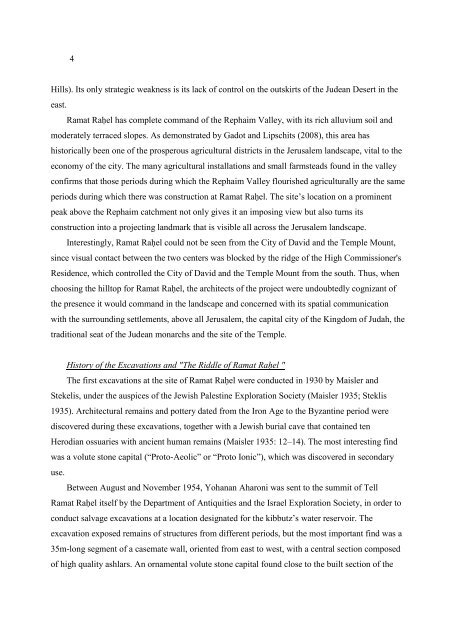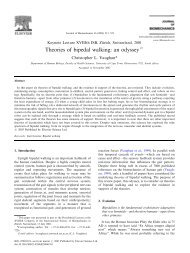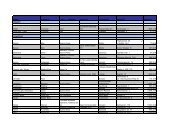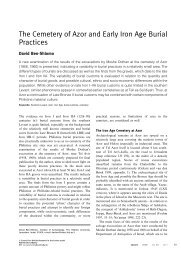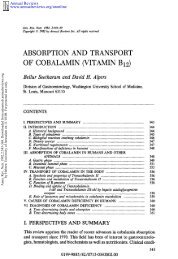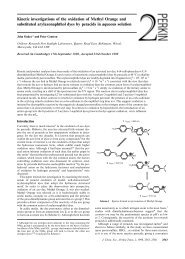The Riddle of Ramat Raḥel: The Archaeology of a Royal Persian ...
The Riddle of Ramat Raḥel: The Archaeology of a Royal Persian ...
The Riddle of Ramat Raḥel: The Archaeology of a Royal Persian ...
Create successful ePaper yourself
Turn your PDF publications into a flip-book with our unique Google optimized e-Paper software.
4Hills). Its only strategic weakness is its lack <strong>of</strong> control on the outskirts <strong>of</strong> the Judean Desert in theeast.<strong>Ramat</strong> <strong>Raḥel</strong> has complete command <strong>of</strong> the Rephaim Valley, with its rich alluvium soil andmoderately terraced slopes. As demonstrated by Gadot and Lipschits (2008), this area hashistorically been one <strong>of</strong> the prosperous agricultural districts in the Jerusalem landscape, vital to theeconomy <strong>of</strong> the city. <strong>The</strong> many agricultural installations and small farmsteads found in the valleyconfirms that those periods during which the Rephaim Valley flourished agriculturally are the sameperiods during which there was construction at <strong>Ramat</strong> <strong>Raḥel</strong>. <strong>The</strong> site’s location on a prominentpeak above the Rephaim catchment not only gives it an imposing view but also turns itsconstruction into a projecting landmark that is visible all across the Jerusalem landscape.Interestingly, <strong>Ramat</strong> <strong>Raḥel</strong> could not be seen from the City <strong>of</strong> David and the Temple Mount,since visual contact between the two centers was blocked by the ridge <strong>of</strong> the High Commissioner'sResidence, which controlled the City <strong>of</strong> David and the Temple Mount from the south. Thus, whenchoosing the hilltop for <strong>Ramat</strong> <strong>Raḥel</strong>, the architects <strong>of</strong> the project were undoubtedly cognizant <strong>of</strong>the presence it would command in the landscape and concerned with its spatial communicationwith the surrounding settlements, above all Jerusalem, the capital city <strong>of</strong> the Kingdom <strong>of</strong> Judah, thetraditional seat <strong>of</strong> the Judean monarchs and the site <strong>of</strong> the Temple.History <strong>of</strong> the Excavations and "<strong>The</strong> <strong>Riddle</strong> <strong>of</strong> <strong>Ramat</strong> <strong>Raḥel</strong> "<strong>The</strong> first excavations at the site <strong>of</strong> <strong>Ramat</strong> <strong>Raḥel</strong> were conducted in 1930 by Maisler andStekelis, under the auspices <strong>of</strong> the Jewish Palestine Exploration Society (Maisler 1935; Steklis1935). Architectural remains and pottery dated from the Iron Age to the Byzantine period werediscovered during these excavations, together with a Jewish burial cave that contained tenHerodian ossuaries with ancient human remains (Maisler 1935: 12–14). <strong>The</strong> most interesting findwas a volute stone capital (“Proto-Aeolic” or “Proto Ionic”), which was discovered in secondaryuse.Between August and November 1954, Yohanan Aharoni was sent to the summit <strong>of</strong> Tell<strong>Ramat</strong> <strong>Raḥel</strong> itself by the Department <strong>of</strong> Antiquities and the Israel Exploration Society, in order toconduct salvage excavations at a location designated for the kibbutz’s water reservoir. <strong>The</strong>excavation exposed remains <strong>of</strong> structures from different periods, but the most important find was a35m-long segment <strong>of</strong> a casemate wall, oriented from east to west, with a central section composed<strong>of</strong> high quality ashlars. An ornamental volute stone capital found close to the built section <strong>of</strong> the


